Toyota Corolla 2000 Owner's Manual

2000 Corolla(U)
Foreword
Welcome to the growing group of valueconscious people who drive Toyotas. We are proud of the advanced engineering and quality construction of each vehicle we build.
This Owner's Manual explains the features of your new Toyota. Please read it and follow the instructions carefully so that you can enjoy many years of safe motoring.
When it comes to service, remember that your Toyota dealer knows your vehicle best and is interested in your complete satisfaction. He will provide quality maintenance and any other assistance you may require.
Please leave this Owner's Manual in this vehicle at the time of resale. The next owner will need this information also.
All information and specifications in this manual are current at the time of printing. However, because of Toyota's policy of continual product improvement, we reserve the right to make changes at any time without notice.
Please note that this manual applies to all models and explains all equipment, including options. Therefore, you may find some explanations for equipment not installed on your vehicle.
1999 TOYOTA MOTOR CORPORATION
All rights reserved. This material may not be reproduced or copied, in whole or in part, without the written permission of Toyota Motor Corporation.
i

2000 Corolla(U)
New vehicle warranty
Your new vehicle is covered by the following Toyota limited warranties:
New vehicle warranty
Emission control systems warranty
Others
For further information, please refer to the “Owner's Warranty Information Bookletº or “Owner's Manual Supplementº.
Your responsibility for maintenance
It is the owner's responsibility to make sure that the specified maintenance is performed. Section 6 gives details of these maintenance requirements. Also included in Section 6 is general maintenance. For scheduled maintenance information, please refer to the separate “Scheduled Maintenance Guideº or “Owner's Manual Supplementº.
Accessories, spare parts and modification of your Toyota
A wide variety of nongenuine spare parts and accessories for Toyota vehicles are currently available in the market. You should know that Toyota does not warrant these products and is not responsible for their performance, repair, or replacement, or for any damage they may cause to, or adverse effect they may have on, your Toyota vehicle.
This vehicle should not be modified with nongenuine Toyota products. Modification with nongenuine Toyota products could affect its performance, safety or durability, and may even violate governmental regulations. In addition, damage or performance problems resulting from the modification may not be covered under warranty.
ii

2000 Corolla(U)
Spark ignition system of your Toyota
The spark ignition system in your Toyota meets all requirements of the Canadian InterferenceCausing Equipment Standard.
Installation of a mobile twoway radio system
As the installation of a mobile twoway radio system in your vehicle could affect electronic systems such as multiport fuel injection system/sequential multiport fuel injection system, cruise control system, antilock brake system, SRS airbag system and seat belt pretensioner system, be sure to check with your Toyota dealer for precautionary measures or special instructions regarding installation.
Scrapping of your Toyota
The SRS airbag and seat belt pretensioner devices in
your |
Toyota |
contain explosive chemicals. If |
the |
vehicle |
|
is scrapped |
with the airbags and pretensioners |
left |
as |
||
they |
are, it |
may cause an accident such |
as |
fire. |
Be |
sure to have the systems of the SRS airbag and seat belt pretensioner removed and disposed of by a qualified service shop or by your Toyota dealer before you dispose of your vehicle.
iii
2000 Corolla(U)
iv

2000 Corolla(U)
SECTION 2
INFORMATION BEFORE DRIVING YOUR TOYOTA
Breakin period . . . . . . . . . . . . . . . . . . . . . . . . . . . . . . . . . . . . . . . . . . . . |
144 |
Fuel . . . . . . . . . . . . . . . . . . . . . . . . . . . . . . . . . . . . . . . . . . . . . . . . . . . . . . . |
144 |
Fuel pump shut off system . . . . . . . . . . . . . . . . . . . . . . . . . . . . . . . . . . . |
146 |
Operation in foreign countries . . . . . . . . . . . . . . . . . . . . . . . . . . . . . . . . |
146 |
Threeway catalytic converter . . . . . . . . . . . . . . . . . . . . . . . . . . . . . . . |
146 |
Engine exhaust cautions . . . . . . . . . . . . . . . . . . . . . . . . . . . . . . . . . . . . |
147 |
Facts about engine oil consumptio . . . . . . . . . . . . . . . . . . . . . . . . . . . . |
148 |
Iridiumtipped spark plugs . . . . . . . . . . . . . . . . . . . . . . . . . . . . . . . . . . . |
149 |
Brake system . . . . . . . . . . . . . . . . . . . . . . . . . . . . . . . . . . . . . . . . . . . . . . |
149 |
Brake pad wear limit indicators . . . . . . . . . . . . . . . . . . . . . . . . . . . . . . . |
152 |
Luggage stowage precautions . . . . . . . . . . . . . . . . . . . . . . . . . . . . . . . |
153 |
Your Toyota's identification . . . . . . . . . . . . . . . . . . . . . . . . . . . . . . . . . . |
153 |
Theft prevention labels . . . . . . . . . . . . . . . . . . . . . . . . . . . . . . . . . . . . . . |
154 |
Suspension and chassis . . . . . . . . . . . . . . . . . . . . . . . . . . . . . . . . . . . . |
155 |
Types of tires . . . . . . . . . . . . . . . . . . . . . . . . . . . . . . . . . . . . . . . . . . . . . . . |
155 |
143
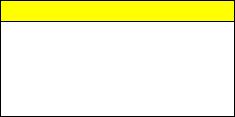
2000 Corolla(U)
Breakin period
Drive gently and avoid high speeds.
Your vehicle does not need an elaborate breakin. But following a few simple tips for the first 1600 km (1000 miles) can add to the future economy and long life of your vehicle:
Do not drive over 88 km/h (55 mph).
Run the engine at moderate speed between 2000 and 4000 rpm.
Avoid fullthrottle starts.
Try to avoid hard stops during the first 300 km (200 miles).
Do not drive slowly with the manual transmission in a high gear.
Do not drive for a long time at any
single speed, either fast or slow.
Do not tow a trailer during the first 800 km (500 miles).
Fuel
FUEL TYPE
Your new vehicle must use only unleaded gasoline.
To help prevent gas station mixups, your Toyota has a new smaller fuel tank opening. The special nozzle on pumps with unleaded fuel will fit it, but the larger standard nozzle on pumps with leaded gas will not.
At a minimum, the gasoline you use should meet specifications of ASTM D4814 in the U.S.A. and CGSB 3.5- M93 in Canada.
NOTICE
Do not use leaded gasoline. Use of leaded gasoline will cause the threeway catalytic converter to lose its effectiveness and the emission control system to function improperly. Also, this can increase maintenance costs.
OCTANE NUMBER
Select Octane Rating 87 (Research Octane Number 91) or higher.
Use of unleaded fuel with an octane number or rating lower than stated above will cause persistent heavy knocking. If severe, this will lead to engine damage.
If your engine knocks...
If you detect heavy knocking even when using the recommended fuel, or if you hear steady knocking while holding a steady speed on level roads, consult your Toyota dealer.
However, now and then, you may notice light knocking for a short time while accelerating or driving up hills. This is no need of concern.
GASOLINES CONTAINING DETERGENT ADDITIVES
Toyota recommends use of gasolines that contain detergent additives to avoid buildup of engine deposits.
For further details, ask your Toyota dealer or a local gasoline retailer.
IMPROVED GASOLINES
The American Automobile Manufacturers Association (AAMA) has developed a specification of improved gasolines. The AAMA specification offers optimal fuel information for better vehicle performance and better protection of your engine.
Toyota recommends the use of gasolines that meet the AAMA specification, if available, for improved driveability and emission control system.
144
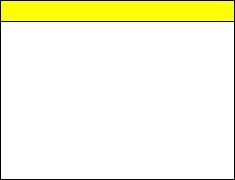
2000 Corolla(U)
GASOLINES CONTAINING MTBE
Gasolines that contain MTBE (Methyl TertiaryButyl Ether) are available in the market. If you use a gasoline mixed with MTBE, make certain that it does not contain more than 15% of MTBE.
GASOLINES CONTAINING MMT
Some gasolines contain an octaneen- hancing additive called MMT (methylcyclopentadienyl manganese tricarbonyl).
Toyota does not recommend the use of gasolines that contain MMT. If fuels containing MMT are used, your emission control system may be adversely affected. The Malfunction Indicator Lamp on the instrument cluster may come on. If this happens, contact your Toyota dealer for service.
GASOLINES CONTAINING ALCOHOL
If you use gasohol in your Toyota, be sure that it is unleaded, has an octane rating no lower than 87 and does not contain more than 10% ethanol.
Gasohol is a mixture of gasoline and ethanol.
Toyota do not recommend the use of gas- |
FUEL TANK CAPACITY |
|
olines |
containing methanol. If you use |
50 L (13.2 gal., 11.0 lmp. gal.) |
gasoline containing methanol, use only |
|
|
gasoline meeting the requirements above |
|
|
and also containing less than 5% metha- |
|
|
nol with cosolvents and corrosion inhibi- |
|
|
tors for |
methanol. |
|
GASOLINES QUALITY |
|
|
In a very few cases, you may experience |
|
|
driveability problems caused by the partic- |
|
|
ular gasoline that you are using. If you |
|
|
continue to have unacceptable driveability, |
|
|
try changing gasoline brands. If that does |
|
|
not rectify your problem, then consult your |
|
|
Toyota |
dealer. |
|
NOTICE
Do not use gasohol other than stated above. It will cause fuel system damage or vehicle performance problems.
If driveability problems occur (poor hot starting, vaporizing, engine knock, etc.), discontinue the use.
Take care not to spill gasohol during refueling. Gasohol may cause paint damage.
145
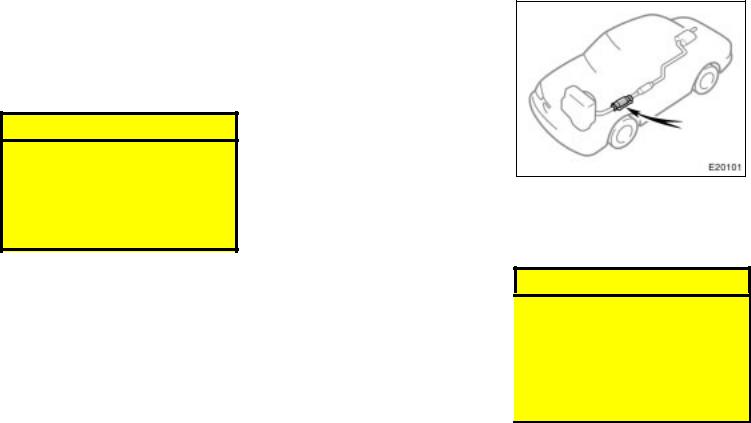
Fuel pump shut off system
The fuel pump shut off system stops supplying fuel to the engine to minimize the risk of fuel leakage when the engine stalls or an airbag inflates upon collision. To restart the engine after the fuel pump shut off system activates, turn the ignition switch to “ACCº or “LOCKº once and start it.
 CAUTION
CAUTION
Inspect the ground under the vehicle before restarting the engine. If you find that liquid has leaked onto the ground, it is the fuel system has been damaged and it is in need of repair. In this case, do not restart the engine.
2000 Corolla(U)
Operation in foreign countries
If you plan to drive your Toyota in
another country...
First, comply with the vehicle registration laws.
Second, confirm the availability of the correct fuel (unleaded and minimum octane number).
Threeway catalytic converter
The threeway catalytic converter is an emission control device installed in the exhaust system.
The purpose is to reduce pollutants in the exhaust gas.
 CAUTION
CAUTION
Keep people and combustible materials away from the exhaust pipe while the engine is running. The exhaust gas is very hot.
Do not drive, idle or park your vehicle over anything that might burn easily such as grass, leaves, paper or rags.
146

2000 Corolla(U)
NOTICE
A large amount of unburned gases flowing into the threeway catalytic converter may cause it to overheat and create a fire hazard. To prevent this and other damage, observe the following precautions:
Use only unleaded gasoline.
Do not drive with an extremely low fuel level; running out of fuel could cause the engine to misfire, creating an excessive load on the threeway catalytic converter.
Do not allow the engine to run at idle speed for more than 20 minutes.
Avoid racing the engine.
Do not pushstart or pullstart your vehicle.
Do not turn off the ignition while the vehicle is moving.
Keep your engine in good running order. Malfunctions in the engine electrical system, electronic ignition system/distributor ignition system or fuel system could cause an extremely high threeway catalytic converter temperature.
If the engine becomes difficult to start or stalls frequently, take your vehicle in for a checkup as soon as possible. Remember, your Toyota dealer knows your vehicle and its threeway catalytic converter system best.
To ensure that the threeway catalytic converter and the entire emission control system operate properly, your vehicle must receive the periodic inspections required by the Toyota Maintenance Schedule. For scheduled maintenance information, refer to the separate “Scheduled Maintenance Guideº or “Owner's Manual Supplementº.
Engine exhaust cautions
 CAUTION
CAUTION
Avoid inhaling the engine exhaust.
It contains carbon monoxide, which is a colorless and odorless gas. It can cause unconsciousness or even death.
Make sure the exhaust system has no holes or loose connections. The system should be checked from time to time. If you hit something, or notice a change in the sound of the exhaust, have the system checked immediately.
Do not run the engine in a garage
or |
enclosed area except for the |
|
time needed |
to drive the vehicle in |
|
or |
out. The |
exhaust gases cannot |
escape, making this a particularly dangerous situation.
Do not remain for a long time in a parked vehicle with the engine running. If it is unavoidable, however, do so only in an unconfined area and adjust the heating or cooling system to force outside air into the vehicle.
147

2000 Corolla(U)
Keep the trunk lid closed while driving. An open or unsealed trunk lid may cause exhaust gases to be drawn into the vehicle.
To allow proper operation of your vehicle's ventilation system, keep the inlet grilles in front of the windshield clear of snow, leaves, or other obstructions.
If you smell exhaust fumes in the vehicle, drive with the windows open and the trunk lid closed. Have the cause immediately located and corrected.
Facts about engine oil consumption
FUNCTIONS OF ENGINE OIL
Engine oil has the primary functions of lubricating and cooling the inside of the engine, and plays a major role in maintaining the engine in proper working order.
ENGINE OIL CONSUMPTION
It is normal that an engine should consume some engine oil during normal engine operation. The causes of oil consumption in a normal engine are as follows.
Oil is used to lubricate pistons, piston rings and cylinders. A thin film of oil is left on the cylinder wall when a piston moves downwards in the cylinder. High negative pressure generated when the vehicle is decelerating sucks some of this oil into the combustion chamber. This oil as well as some part of the oil film left on the cylinder wall is burned by the high temperature combustion gases during the combustion process.
Oil is also used to lubricate the stems of the intake valves. Some of this oil is sucked into the combustion chamber together with the intake air and is burned along with the fuel. High temperature exhaust gases also burn the oil used to lubricate the exhaust valve stems.
The amount of engine oil consumed depends on the viscosity of the oil, the quality of the oil and the conditions the vehicle is driven under.
More oil is consumed by highspeed driving and frequent acceleration and deceleration.
A new engine consumes more oil, since its pistons, piston rings and cylinder walls have not become conditioned.
When judging the amount of oil consumption, note that the oil may become diluted and make it difficult to judge the true level accurately.
As an example, if a vehicle is used for repeated short trips, and consumes a normal amount of oil, the dipstick may not show any drop in the oil level at all, even after 1000 km (600 miles) or more. This is because the oil is gradually becoming diluted with fuel or moisture, making it appear that the oil level has not changed.
148
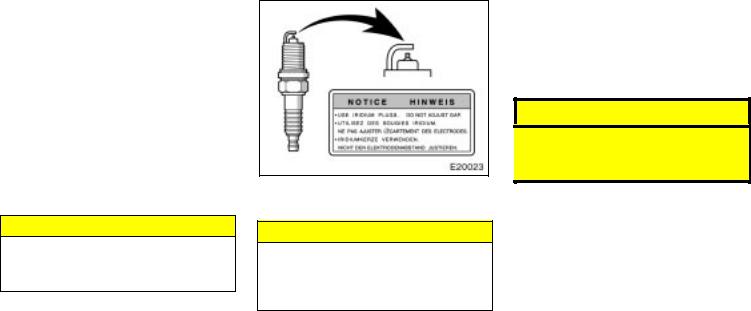
2000 Corolla(U)
The diluting ingredients evaporate out when the vehicle is then driven at high speeds, as on an express way, making it appear that oil is excessively consumed after driving at high speeds.
IMPORTANCE OF ENGINE OIL LEVEL CHECK
One of the most important points in proper vehicle maintenance is to keep the engine oil at the optimum level so that oil function will not be impaired. Therefore, it is essential that the oil level be checked regularly. Toyota recommends that the oil level be checked every time you refuel the vehicle.
NOTICE
Failure to check the oil level regularly could lead to serious engine trouble due to insufficient oil.
For detailed information on oil level check, see “Checking the engine oil levelº in Section 7- 2.
Iridiumtipped spark plugs
Your engine is fitted with iridiumtipped spark plugs.
NOTICE
Use only iridiumtipped spark plugs and do not adjust gaps for your engine performance and smooth driveability.
Brake system
The tandem master cylinder brake system is a hydraulic system with two separate subsystems. If either subsystem should fail, the other will still work. However, the pedal will be harder to press, and your stopping distance will be longer. Also, the brake system warning light may come on.
 CAUTION
CAUTION
Do not drive your vehicle with only a single brake system. Have your brakes fixed immediately.
BRAKE BOOSTER
The brake booster uses engine vacuum to powerassist the brakes. If the engine should quit while you are driving, you can bring the vehicle to a stop with normal pedal pressure. There is enough reserved vacuum for one or two stopsÐbut no more!
149

2000 Corolla(U)
 CAUTION
CAUTION
Do not pump the brake pedal if the engine stalls. Each push on the pedal uses up your reserved vacuum.
Even if the power assist is completely lost, the brakes will still work. But you will have to push the pedal hard, much harder than normal. And your braking distance will be longer.
ANTILOCK BRAKE SYSTEM (with “ABSº warning light)
The antilock brake system is designed to help prevent lockup of the wheels during a sudden braking or braking on slippery road surfaces. This assists in providing stability and steering performance of the vehicle under these circumstances.
Effective way to press the ABS brake pedal:
When the antilock brake system function is in action, just hold the brake pedal down more firmly. Especially, in a panic stop, you need to keep it depressed more firmly, and do not pump the brake. Pumping the brake pedal makes the stopping distance longer.
The antilock brake system becomes operative after the vehicle has accelerated to a speed in excess of approximately 10 km/h (6 mph). It stops operating when the vehicle decelerates to a speed below approximately 5 km/h (3 mph).
Depressing the brake pedal on slippery road surfaces such as on the manhole cover, the steel plate under the construction, joints in the bridge, etc. on a rainy day tends to activate the antilock brake system.
You may hear a click or motor sound in the engine compartment for a few seconds when the engine is started or just after the vehicle is started. This means that the antilock brake system is in the self check mode, and does not indicate a malfunction.
When the antilock brake system is activated, the following conditions may occur, however, do not indicate a malfunction of the system:
You may hear the antilock brake system operating and feel the brake pedal pulsating and the vibrations of the vehicle body and steering wheel. You may also hear the motor sound in the engine compartment even after the vehicle is stopped.
At the end of the antilock brake system activation, the brake pedal may move a little to the forward.
150
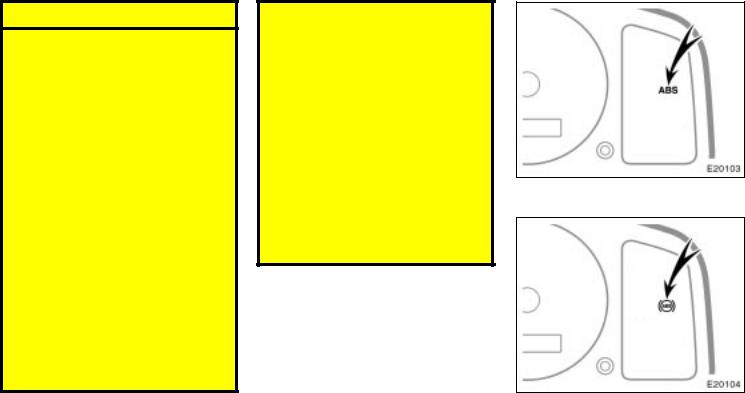
2000 Corolla(U)
 CAUTION
CAUTION
Do not overestimate the antilock brake system: Although the antilock brake system assists in providing vehicle control, it is still important to drive with all due care and maintain a moderate speed and safe distance from the vehicle in front of you, because there are limits to the vehicle stability and effectiveness of steering wheel operation even with the antilock brake system on.
If tires grip performance exceeds its capability, or if hydroplaning occurs during high speed driving in the rain, the antilock brake system does not provide vehicle control.
Antilock brake system is not designed to shorten the stopping distance: Always drive at the moderate speed and maintain a safe distance from the vehicle in front of you. Compared with vehicles not fitted with an antilock brake system, your vehicle may require a longer stopping distance in the following cases:
Driving on rough, gravel or snowcovered roads.
Driving with tire chains installed.
Driving over the steps such as the joints on the road.
Driving on roads where the road surface is pitted or has other differences in surface height.
Install all 4 tires of specified size at designated pressure: The antilock brake system detects vehicle speeds using the speed sensors for respective wheels' turning speeds. The use of tires other than specified may fail to detect the accurate turning speed, resulting in a longer stopping distance.
Type A
Type B
151
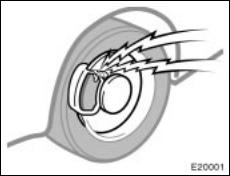
2000 Corolla(U)
“ABSº warning light
The light comes on with the ignition key is turned to the “ONº position. If the antilock brake system works properly, the light goes out after a few seconds. Thereafter, if the system malfunctions, the light comes on.
When the “ABSº warning light is on (and the brake system warning light is off), the antilock brake system does not operate, but the brake system still operates conventionally.
When the “ABSº warning light is on (and the brake system warning light is off), the antilock brake system does not operate so that the wheels could lock up during a sudden braking or braking on slippery road surfaces.
If the following conditions occur, this indicates a malfunction somewhere in the parts monitored by the warning light system. Contact your Toyota dealer as soon as possible to service the vehicle.
The light does not come on with the ignition key turned to “ONº, or remains on.
The light comes on while driving.
If the light lit during driving goes out and does not come on again, it is a normal operation.
Brake pad wear limit indicators
The brake pad wear limit indicators on your disc brakes give a warning noise when the brake pads are worn to where replacement is required.
If you hear a squealing or scraping noise while driving, have the brake pads checked and replaced by your Toyota dealer as soon as possible. Expensive rotor damage can result if the pads are not replaced when necessary.
152
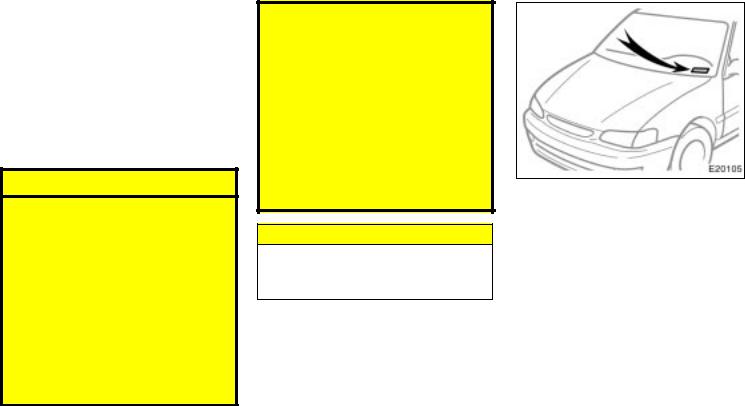
Luggage stowage precautions
When stowing luggage or cargo in the vehicle, observe the following:
Put luggage or cargo in the trunk when at all possible. Be sure all items are secured in place.
Be careful to keep the vehicle balanced. Locating the weight as far forward as possible helps maintain balance.
For better fuel economy, do not carry unneeded weight.
 CAUTION
CAUTION
To prevent luggage or packages from sliding forward during braking, do not stack anything in the enlarged trunk. Keep luggage or packages low, as close to the floor as possible.
Never allow anyone to ride in the enlarged trunk. It is not designed for passengers. They should ride in their seats with their seat belts properly fastened. Otherwise, they are much more likely to suffer serious bodily injury, in the event of sudden braking or a collision.
2000 Corolla(U)
Your Toyota's identificationÐ ÐVehicle identification number
Do not place anything on the package tray behind the rear seatback. Such items may be thrown about and possibly injure people in the vehicle during sudden braking or an accident.
Do not drive with objects left on top of the instrument panel. They may interfere with the driver's field of view. Or they may move during sharp vehicle acceleration or turning, and impair the driver's control of the vehicle. In an accident they may injure the vehicle occupants.
NOTICE
Do not load the vehicle beyond the vehicle capacity weight specified in Section 8.
The vehicle identification number (VIN) is the legal identifier for your vehicle. This number is on the left top of the instrument panel, and can be seen through the windshield from outside.
This is |
the primary identification number |
||
for |
your |
Toyota. |
It is used in registering |
the |
ownership of |
your vehicle. |
|
153

2000 Corolla(U)
|
Theft prevention labels |
ÐEngine number |
(except for Canada) |
The vehicle identification number (VIN) is also on the Certification Label.
The engine number is stamped on the engine block as shown.
Your new vehicle carries theft prevention labels which are approximately 56 mm (2.20 in.) by 16 mm (0.63 in.).
The purpose of these labels is to reduce the incidence of vehicle thefts by facilitating the tracing and recovery of parts from stolen vehicles. The label is designed so that once it is applied to a surface, any attempt to remove it will result in destroying the integrity of the label. Transferring these labels intact from one part to another, will be impossible.
NOTICE
You should not attempt to remove the theft prevention labels as it may violate certain state or federal laws.
154

2000 Corolla(U)
Suspension and chassis
 CAUTION
CAUTION
Do not modify the suspension/chassis with lift kits, spacers, springs, etc. It can cause dangerous vehicle handling characteristics, resulting in loss of control.
Types of tires
Determine what kind of tires your vehicle is originally equipped with.
1. Summer tires
Summer tires are highspeed capability tires best suited to highway driving under dry conditions.
Since summer tires do not have the same traction performance as snow tires, summer tires are inadequate for driving on snowcovered or icy roads. For driving on snowcovered or icy roads, we recommend using snow tires. If installing snow tires, be sure to replace all four tires.
2. All season tires
All season tires are designed to provide better traction in snow and to be adequate for driving in most winter conditions, as well as for use all year round.
All season tires, however, do not have adequate traction performance compared with snow tires in heavy or loose snow. Also, all season tires fall short in acceleration and handling performance compared with summer tires in highway driving.
 CAUTION
CAUTION
Do not mix summer and all season tires on your vehicle as this can cause dangerous handling characteristics, resulting in loss of control.
Do not use tires other than the manufacturer's designated tires, and do not mix tires or wheels of the sizes different from the originally equipped tires and wheels.
155
2000 Corolla(U)
156
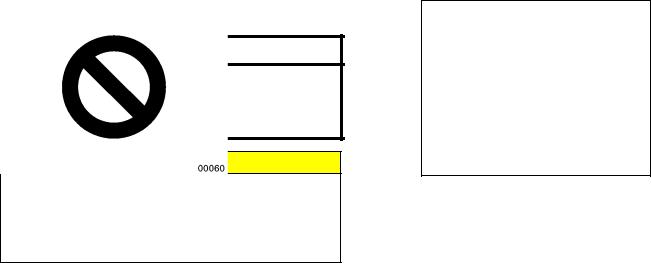
2000 Corolla(U)
Important information about this manual
Safety and vehicle damage warnings
In this manual, you will see CAUTION and NOTICE warnings. These are used in the following ways:
 CAUTION
CAUTION
This is a warning against something which may cause injury to people if the warning is ignored. You are informed what you must or must not do in order to avoid or reduce the risk to yourself and other people.
NOTICE
This is a warning against something which may cause damage to the vehicle or its equipment if the warning is ignored. You are informed what you must or must not do in order to avoid or reduce the risk of damage to your vehicle and its equipment.
Safety symbol
In this manual, you will also see a circle with a slash through it. This means “Do notº, “Do not do thisº, or “Do not let this happenº.
v

2000 Corolla(U)
SECTION 3
STARTING AND DRIVING
Before starting the engine . . . . . . . . . . . . . . . . . . . . . . . . . . . . . . . . . . . 158 How to start the engine . . . . . . . . . . . . . . . . . . . . . . . . . . . . . . . . . . . . . . 158
Tips for driving in various condition . . . . . . . . . . . . . . . . . . . . . . . . . . . 159
Winter driving tips . . . . . . . . . . . . . . . . . . . . . . . . . . . . . . . . . . . . . . . . . . 160 Trailer towing . . . . . . . . . . . . . . . . . . . . . . . . . . . . . . . . . . . . . . . . . . . . . . 161
How to save fuel and make your vehicle last longer, to . . . . . . . . . . 166
157
2000 Corolla(U)
Before starting the engine
1.Check the area around the vehicle before entering it.
2.Adjust seat position, seatback angle,
head |
restraint height and steering |
wheel |
angle. |
3.Adjust the inside and outside rear view mirrors.
4.Lock all doors.
5.Fasten seat belts.
How to start the engineÐ
(a)Before cranking
1.Apply the parking brake firmly.
2.Turn off unnecessary lights and accessories.
3.Manual transmission: Press the clutch pedal to the floor and shift the transmission into neutral. Hold the clutch pedal to the floor until the engine is started. A starter safety device will prevent the starter from operating if the clutch pedal is not fully depressed.
Automatic transmission: Put the selector lever in “Pº. If you need to restart the engine while the vehicle is
moving, |
put the |
selector lever in |
“Nº. |
A starter |
safety |
device will prevent |
the |
starter from operating if the selector lever is in any drive position.
4. Automatic transmission only: Depress the brake pedal and hold it to the floor until driving off.
(b) Starting the engine
Before starting the engine, be sure to follow the instructions in “(a) Before crankingº.
Normal starting procedure
The multiport fuel injection system/sequential multiport fuel injection system in your engine automatically controls the proper airfuel mixture for starting. You can start a cold or hot engine as follows:
1.With your foot off the accelerator pedal, crank the engine by turning the key to “STARTº. Release it when the engine starts.
2.After the engine runs for about 10 se-
conds, you are ready to drive.
If the weather is below freezing, let the engine warm up for a few minutes before driving.
If the engine stalls...
Simply restart it, using the correct procedure given in normal starting.
If the engine will not start...
See “If your vehicle will not startº in Section 4.
158

2000 Corolla(U)
NOTICE
Do not crank for more than 30 seconds at a time. This may overheat the starter and wiring systems.
Do not race a cold engine.
If the engine becomes difficult to start or stalls frequently, have the engine checked immediately.
Tips for driving in various conditions
Always slow down in gusty crosswinds. This will allow you much better control.
Drive slowly onto curbs and, if possible, at a right angle. Avoid driving onto high, sharpedged objects and other road hazards. Failure to do so can lead to severe tire damage resulting in tire bursts.
When parking on a hill, turn the front
wheels until they touch the curb so that the vehicle will not roll. Apply the parking brake, and place the transmission in “Pº (automatic) or in first or reverse (manual). If necessary, block the wheels.
Washing your vehicle or driving through deep water may get the brakes wet. To see whether they are wet, check that there is no traffic near you, and then press the pedal lightly. If you do not feel a normal braking force, the brakes are probably wet. To dry them, drive the vehicle cautiously while lightly pressing the brake pedal with the parking brake applied. If they still do not work safely, pull to the side of the road and call a Toyota dealer for assistance.
 CAUTION
CAUTION
Before driving off, |
make |
sure that |
|
the parking brake is fully released |
|||
and |
the parking |
brake |
reminder |
light |
is off. |
|
|
Do not leave your vehicle unattended while the engine is running.
Do not rest your foot on the brake pedal while driving. It can cause dangerous overheating, needless wear, and poor fuel economy.
To drive down a long or steep hill, reduce your speed and downshift. Remember, if you ride the brakes excessively, they may overheat and not work properly.
Be careful when accelerating, upshifting, downshifting or braking on a slippery surface. Sudden acceleration or engine braking could cause the vehicle to spin or skid.
159
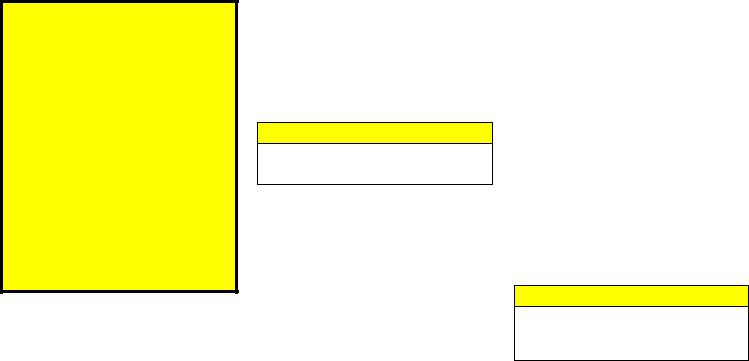
2000 Corolla(U)
Do not drive in excess of the speed limit. Even if the legal speed limit permits it, do not drive over 140 km/h (85 mph) unless your vehicle has highspeed capability tires. Driving over 140 km/h (85 mph) may result in tire failure, loss of control and possible injury. Be sure to consult a tire dealer to determine whether the tires on your vehicle are highspeed capability tires or not before driving at such speeds.
Do not continue normal driving
when the brakes are wet. If they are wet, your vehicle will require a longer stopping distance, and it may pull to one side when the brakes are applied. Also, the parking brake will not hold the vehicle securely.
Winter driving tips
Make sure you have a proper freeze protection of engine coolant.
Your coolant must contain ethyleneglycol type coolant for a proper corrosion protection of aluminum components. Use “TOYOTA Long Life Coolantº or equivalent.
See Section 7- 2 for details about coolant type selection.
NOTICE
Do not use alcohol type antifreeze or plain water alone.
When it is extremely cold, we recommend to use 60% solution for your Toyota, to provide protection down to about -50 C (- 58 F). Do not use more than 70% solution for better coolant performance.
Check the condition of the battery and cables.
Cold temperatures reduce the capacity of any battery, so it must be in top shape to provide enough power for winter starting. Section 7- 3 tells you how to visually inspect the battery. Your Toyota dealer and most service stations will be pleased to check the level of charge.
Make sure the engine oil viscosity is suitable for the cold weather.
See Section 7- 2 for recommended viscosity. Leaving a heavy summer oil in your vehicle during winter months may cause harder starting. If you are not sure about which oil to use, call your Toyota dealerÐhe will be pleased to help.
Keep the door locks from freezing.
Squirt lock deicer or glycerine into the locks to keep them from freezing. To open a frozen lock, try heating the key before inserting it.
Use a washer fluid containing an antifreeze solution.
This product is available at your Toyota dealer and most auto parts stores. Follow the manufacturer's directions for how much to mix with water.
NOTICE
Do not use engine antifreeze or any other substitute because it may damage your vehicle's paint.
160
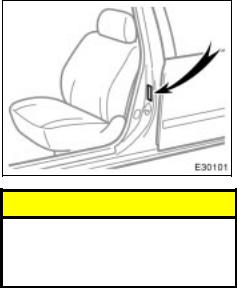
2000 Corolla(U)
Do not use your parking brake when there is a possibility it could freeze.
When parking, put the transmission into “Pº (automatic) or into first or reverse (manual) and block the rear wheels. Do not use the parking brake, or snow or water accumulated in and around the parking brake mechanism may freeze, making it hard to release.
Keep ice and snow from accumulating under the fenders.
Ice and snow built up under your fenders can make steering difficult. During bad winter driving, stop and check under the fenders occasionally.
Depending on where you are driving, we recommend you carry some emergency equipment.
Some of the things you might put in the vehicle are tire chains, window scraper, bag of sand or salt, flares, small shovel, jumper cables, etc.
Trailer towing
Your vehicle is designed primarily as a passengercarrying vehicle. Towing a trailer will have an adverse effect on handling, performance, braking, durability and driving economy (fuel consumption, etc.). Your safety and satisfaction depend on the proper use of correct equipment and cautious driving habits. For your safety and the safety of others, you must not overload your vehicle or trailer. Toyota warranties do not apply to damage or malfunction caused by towing a trailer for commercial purposes. Ask your local Toyota dealer for further details before towing.
WEIGHT LIMITS
Before towing, make sure the total trailer weight, gross vehicle weight, gross axle weight and trailer tongue load are all within the limits.
The total trailer weight and tongue load can be measured with platform scales found at a highway weighing station, building supply company, trucking company, junk yard, etc.
 CAUTION
CAUTION
The total |
trailer |
weight |
(trailer |
weight plus |
its cargo load) |
must |
|
not exceed 680 kg (1500 lb.). Ex- |
|||
ceeding this |
weight |
is dangerous. |
|
|
|
|
|
161
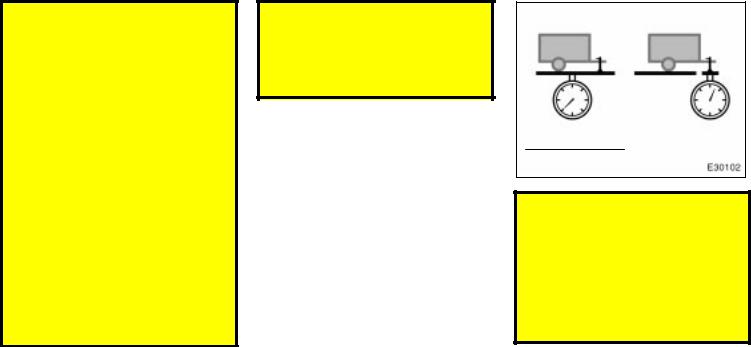
2000 Corolla(U)
Trailer hitch assemblies have different weight capacities established by the hitch manufacturer. Even though the vehicle may be physically capable of towing a higher weight, the operator must determine the maximum weight rating of the particular hitch assembly and never exceed the maximum weight rating specified for the trailerhitch. Exceeding the maximum weight rating set by the trailer hitch manufacturer can cause an accident resulting in serious personal injuries.
The gross vehicle weight must not exceed the Gross Vehicle Weight Rating (GVWR) indicated on the Certification Label. The gross vehicle weight is the sum of weights of the unloaded vehicle, driver, passengers, luggage, hitch and trailer tongue load. It also includes the weight of any special equipment installed on your vehicle.
The load on either the front or rear axle resulting from distribution of the gross vehicle weight on both axles must not exceed the Gross Axle Weight Rating (GAWR) listed on the Certification Label.
Total trailer weight |
Tongue load |
Tongue load
100 = 9 to 11%
Total trailer weight
The trailer cargo load should be distributed so that the tongue load is 9 to 11% of the total trailer weight, not exceeding the maximum of 68 kg (150 lb.). Never load the trailer with more weight in the back than in the front. About 60% of the trailer load should be in the front half of the trailer and the remaining 40% in the rear.
162
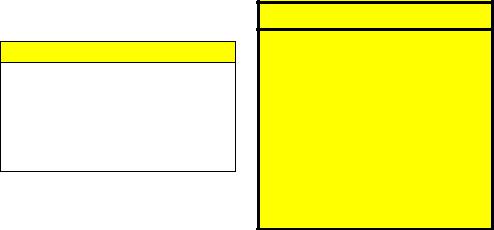
2000 Corolla(U)
HITCHES
Use only a hitch which is recommended by the hitch manufacturer and conforms to the total trailer weight requirement.
Follow the directions supplied by the hitch manufacturer. Lubricate the hitch
ball with a light coat of grease.
Toyota recommends removing the trailer hitch whenever you are not towing a trailer to reduce the possibility of additional damage caused by the hitch if your vehicle is struck from behind.
NOTICE
Do not use axlemounted hitches as they can cause damage to the axle housing, wheel bearings, wheels or tires. Also, never install a hitch which may interfere with the normal function of an Energy Absorbing Bumper, if so equipped.
BRAKES AND SAFETY CHAINS
Toyota recommends trailers with brakes that conform to any applicable federal and state/provincial regulations.
A safety chain must always be used between the towing vehicle and the trailer. Leave sufficient slack in the chain for turns. The chain should cross under the trailer tongue to prevent the tongue from dropping to the ground in case it becomes damaged or separated. For correct safety chain procedures, follow the hitch or trailer manufacturer's recommendations.
 CAUTION
CAUTION
If the total trailer weight exceeds 453 kg (1000 lb.), trailer brakes are required.
Never tap into your vehicle's hydraulic system as it would lower its braking effectiveness.
Never tow a trailer without using a safety chain securely attached to both the trailer and the vehicle. If damage occurs to the coupling unit or hitch ball, there is danger of the trailer wandering over into another lane.
TIRES
Ensure that your vehicle's tires are properly inflated. See Section 7- 2 for instructions.
The trailer tires should be inflated to the pressure recommended by the trailer manufacturer in respect to the total trailer weight.
TRAILER LIGHTS
Trailer lights must comply with federal, state/provincial and local regulations. See your local recreational vehicle dealer or rental agency for the correct type of wiring and relays for your trailer. Check for correct operation of the turn signals and stop lights each time
you hitch up. Direct splicing may damage your vehicle's electrical system and cause a malfunction of your lights.
BREAKIN SCHEDULE
Toyota recommends that you do not tow a trailer with a new vehicle or a vehicle with any new power train component (engine, transmission, differen-
tial, |
wheel bearing, |
etc.) for the first |
800 |
km (500 miles) |
of driving. |
163
2000 Corolla(U)
MAINTENANCE
If you tow a trailer, your vehicle will require more frequent maintenance due to the additional load. For this information, please refer to the scheduled maintenance information in the “Scheduled Maintenance Guideº or “Owner's Manual Supplementº.
Retighten all fixing bolts of the towing ball and bracket after approximately 1000 km (600 miles) of trailer driving.
PRETOWING SAFETY CHECK
Check that your vehicle remains level when a loaded or unloaded trailer is hitched. Do not drive if the vehicle has an abnormal noseup or nosedown
condition, |
and |
check for |
improper |
tongue load, overload,worn |
suspension |
||
or other |
possible |
causes. |
|
Make sure the trailer cargo is securely loaded so that it can not shift.
Check that your rear view mirrors conform to any applicable federal, state/ provincial or local regulation. If not,
install the |
rear view mirrors required |
for towing |
purpose. |
TRAILER TOWING TIPS
When towing a trailer, your vehicle will handle differently than when not towing. The three main causes of vehicletrailer accidents are driver error, excessive speed and improper trailer loading. Keep these in mind when towing:
Before starting out, check operation of the lights and all vehicletrailer connections. After driving a short distance, stop and recheck the lights and connections. Before actually towing a trailer, practice turning, stopping and backing with a trailer in an area away from
traffic until you learn the feel.
Backing with a trailer is difficult and requires practice. Grip the bottom of
the steering wheel and move your hand to the left to move the trailer to the left. Move your hand to the right to move the trailer to the right. (This procedure is generally opposite to that when backing without a trailer). Also, just turn the steering wheel a little at a time, avoiding sharp or prolonged turning. Have someone guide you when backing to reduce the risk of an accident.
Because stopping distance may be increased, vehicleto- vehicle distance should be increased when towing a trailer. For each 16 km/h (10 mph) of speed, allow at least one vehicle and trailer length between you and the vehicle ahead. Avoid sudden braking as you may skid, resulting in jackknifing and loss of control. This is especially true on wet or slippery surfaces.
Avoid jerky starts or sudden acceleration. If your vehicle has a manual
transmission, prevent excessive clutch slippage by keeping engine rpm low and not racing the engine. Always start out in first gear.
Avoid jerky steering and sharp turns. The trailer could hit your vehicle in a tight turn. Slow down before making a turn to avoid the necessity of sudden braking.
164
2000 Corolla(U)
Remember |
that when making a turn, |
|
the |
trailer |
wheels will be closer than |
the |
vehicle |
wheels to the inside of the |
turn. Therefore, compensate for this by making a larger than normal turning radius with your vehicle.
Crosswinds and rough roads will adversely affect handling of your vehicle and trailer, causing sway. Pay attention to the rear from time to time to prepare yourself for being passed by large trucks or buses, which may cause your vehicle and trailer to sway. If swaying happens, firmly grip the steering wheel and reduce speed immediately but
gradually. Never increase speed. Steer straight ahead. If you make no extreme correction with the steering or brakes, the vehicle and trailer will stabilize.
Be careful when passing other vehicles. Passing requires considerable distance. After passing a vehicle, do not forget the length of your trailer and be sure you have plenty of room before changing lanes.
In order to maintain engine braking efficiency do not use fifth gear (manual transmission) or overdrive (automatic transmission).
Because of the added load of the trailer, your vehicle's engine may overheat
on hot days (at temperatures over 30 C [85 F]) when going up a long or steep grade with a trailer. If the engine coolant temperature gauge indicates overheating, immediately turn off the air conditioning (if in use), pull off the road and stop in a safe spot. Refer to “If your vehicle overheatsº in Section 4 of this manual.
Always place wheel blocks under both the vehicle and trailer wheels when parking. Apply the parking brake firmly. Put the transmission in “Pº (automatic) or in first or reverse (manual). Avoid
parking on a slope |
with a trailer, |
but |
|
if it |
cannot be avoided, do so |
only |
|
after |
performing the |
following: |
|
1.Apply the brakes and hold.
2.Have someone place wheel blocks under both the vehicle and trailer wheels.
3.When the wheel blocks are in place, release your brakes slowly until the blocks absorb the load.
4.Apply the parking brake firmly.
5. Shift into first or |
reverse (manual) |
or |
“Pº (automatic) and turn off the engine. |
||
When restarting out |
after parking on |
a |
slope:
1.With the transmission in “Pº position (automatic) or the clutch pedal depressed (manual), start the engine. (With an automatic transmission, be sure to keep the brake pedal depressed.)
2.Shift into gear.
3.Release the parking brake (also foot brake on automatic transmission vehicles) and slowly pull or back away from the wheel blocks. Stop and apply your brakes.
4.Have someone retrieve the blocks.
165

2000 Corolla(U)
 CAUTION
CAUTION
Do not exceed 72 km/h (45 mph) or the posted towing speed limit,whichever is lower. Because instability (swaying) of a towing vehicletrailer combination usually increases as the speed increases, exceeding 72 km/h (45 mph) may cause loss of control.
Slow down and downshift before descending steep or long downhill grades. Do not make sudden downshifts.
Avoid holding the brake pedal down too long or too frequently. This could cause the brakes to overheat and result in reduced braking efficiency.
How to save fuel and make your vehicle last longer, too
Getting more kilometers/mileage from a liter/gallon of fuel is easyÐjust take it easy. It will help make your vehicle last longer, too. Here are some specific tips on how to save money on both fuel and repairs:
Keep your tires inflated at the correct pressure. Underinflation causes tire wear and wastes fuel. See Section 7- 2 for instructions.
Do not carry unneeded weight in your vehicle. Excess weight puts a heavier load on the engine, causing greater fuel consumption.
Avoid lengthy warmup idling. Once the engine is running smoothly, begin drivingÐbut gently. Remember, however, that on cold winter days this may take a little longer.
Keep the automatic transmission overdrive turned on when engine braking is not required. Driving with the overdrive off will reduce the fuel economy. (For details, see “Automatic transmissionº in Section 1- 6.)
Accelerate slowly |
and smoothly. |
Avoid jackrabbit starts. Get into high |
|
gear as quickly as |
possible. |
Avoid long engine idling. If you have a long wait and you are not in traffic, it is better to turn off the engine and start again later.
Avoid engine lug or overrevving. Use a gear position suitable for the road on which you are travelling.
Avoid continuous speeding up and slowing down. Stopand- go driving wastes fuel.
Avoid unnecessary stopping and
braking. Maintain a steady pace. Try to time the traffic signals so you only need to stop as little as possible or take advantage of through streets to avoid traffic lights. Keep a proper distance from other vehicles to avoid sudden braking. This will also reduce wear on your brakes.
Avoid heavy traffic or traffic jams whenever possible.
Do not rest your foot on the clutch or brake pedal. This causes premature wear, overheating and poor fuel economy.
Maintain a moderate speed on highways. The faster you drive,the greater the fuel consumption. By reducing your speed, you will cut down on fuel consumption.
166
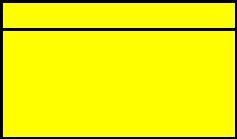
2000 Corolla(U)
Keep the front wheels in proper alignment. Avoid hitting the curb and slow down on rough roads. Improper
alignment not only causes faster tire wear but also puts an extra load on the engine, which, in turn, wastes fuel.
Keep the bottom of your vehicle free from mud, etc. This not only lessens weight but also helps prevent corrosion.
Keep your vehicle tunedup and in top shape. A dirty air cleaner, improper valve clearance, dirty plugs, dirty oil and grease,brakes not adjusted, etc. all lower engine performance and contribute to poor fuel economy. For longer life of all parts and lower operating costs, keep all maintenance work on schedule, and if you often drive under severe conditions, see that your vehicle receives more frequent maintenance. (For scheduled maintenance information, please refer to the separate “Scheduled Maintenance Guideº or “Owner's Manual Supplementº.
 CAUTION
CAUTION
Never turn off the engine to coast down hills. Your power steering and brake booster will not function without the engine running. Also, the emission control system operates properly only when the engine is running.
167
